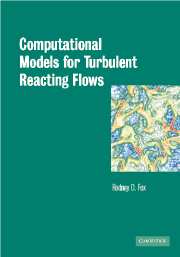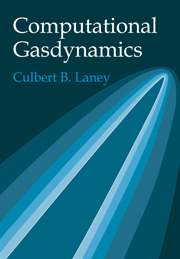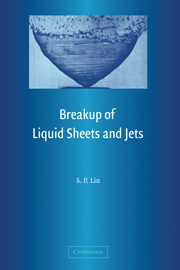Refine search
Actions for selected content:
5486 results in Thermal-fluids engineering

Wind-Diesel Systems
- A Guide to the Technology and its Implementation
-
- Published online:
- 17 December 2009
- Print publication:
- 03 March 1994

Computational Models for Turbulent Reacting Flows
-
- Published online:
- 07 December 2009
- Print publication:
- 30 October 2003

Computational Gasdynamics
-
- Published online:
- 07 December 2009
- Print publication:
- 13 June 1998

Breakup of Liquid Sheets and Jets
-
- Published online:
- 02 December 2009
- Print publication:
- 21 August 2003

Aircraft Performance
-
- Published online:
- 02 December 2009
- Print publication:
- 20 February 1992

Introduction to Structural Dynamics
-
- Published online:
- 30 November 2009
- Print publication:
- 23 October 2006
4 - Wind-driven circulation
- from Part II - Wind-driven and thermohaline circulation
-
- Book:
- Ocean Circulation
- Published online:
- 05 June 2012
- Print publication:
- 26 November 2009, pp 261-479
-
- Chapter
- Export citation
3 - Energetics of the oceanic circulation
- from Part I - Introduction
-
- Book:
- Ocean Circulation
- Published online:
- 05 June 2012
- Print publication:
- 26 November 2009, pp 149-258
-
- Chapter
- Export citation
Frontmatter
-
- Book:
- Ocean Circulation
- Published online:
- 05 June 2012
- Print publication:
- 26 November 2009, pp i-iv
-
- Chapter
- Export citation
Suggested reading
-
- Book:
- Ocean Circulation
- Published online:
- 05 June 2012
- Print publication:
- 26 November 2009, pp 782-783
-
- Chapter
- Export citation
Preface
-
- Book:
- Ocean Circulation
- Published online:
- 05 June 2012
- Print publication:
- 26 November 2009, pp xi-xiv
-
- Chapter
- Export citation
2 - Dynamical foundations
- from Part I - Introduction
-
- Book:
- Ocean Circulation
- Published online:
- 05 June 2012
- Print publication:
- 26 November 2009, pp 63-148
-
- Chapter
- Export citation
5 - Thermohaline circulation
- from Part II - Wind-driven and thermohaline circulation
-
- Book:
- Ocean Circulation
- Published online:
- 05 June 2012
- Print publication:
- 26 November 2009, pp 480-760
-
- Chapter
- Export citation
Plate section
-
- Book:
- Ocean Circulation
- Published online:
- 05 June 2012
- Print publication:
- 26 November 2009, pp -
-
- Chapter
- Export citation
Index
-
- Book:
- Ocean Circulation
- Published online:
- 05 June 2012
- Print publication:
- 26 November 2009, pp 784-791
-
- Chapter
- Export citation
1 - Description of the world's oceans
- from Part I - Introduction
-
- Book:
- Ocean Circulation
- Published online:
- 05 June 2012
- Print publication:
- 26 November 2009, pp 3-62
-
- Chapter
- Export citation
Part II - Wind-driven and thermohaline circulation
-
- Book:
- Ocean Circulation
- Published online:
- 05 June 2012
- Print publication:
- 26 November 2009, pp 259-260
-
- Chapter
- Export citation
Contents
-
- Book:
- Ocean Circulation
- Published online:
- 05 June 2012
- Print publication:
- 26 November 2009, pp v-x
-
- Chapter
- Export citation
References
-
- Book:
- Ocean Circulation
- Published online:
- 05 June 2012
- Print publication:
- 26 November 2009, pp 761-781
-
- Chapter
- Export citation
Part I - Introduction
-
- Book:
- Ocean Circulation
- Published online:
- 05 June 2012
- Print publication:
- 26 November 2009, pp 1-2
-
- Chapter
- Export citation
